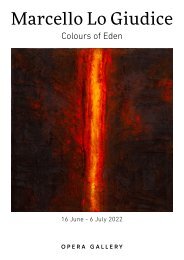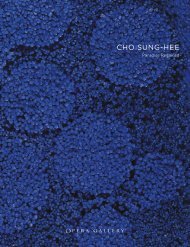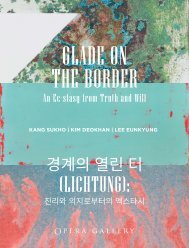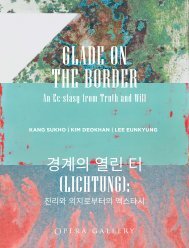AMERICAN-ICONS-WEB2
Create successful ePaper yourself
Turn your PDF publications into a flip-book with our unique Google optimized e-Paper software.
MEL<br />
BOCHNER<br />
b. 1940<br />
Mel Bochner, né en 1940 à Pittsburgh (Pennsylvanie) aux États-Unis est considéré<br />
comme l’une des figures marquantes du développement de l’art conceptuel à New York<br />
dans les années 1960 et 1970. Il fait partie d’une nouvelle génération d’artistes, tels Eva<br />
Hesse, Donald Judd et Robert Smithson, qui veulent rompre avec l’expressionnisme<br />
abstrait et les normes de composition artistiques traditionnelles. Précurseur de<br />
l’utilisation du langage écrit dans le visuel, il organise en 1966 l’exposition Working<br />
Drawings, dont Benjamin Buchloh (historien d’art de l’université Harvard) dira<br />
qu’elle est « probablement la première véritable exposition conceptuelle ». Bochner<br />
atteint sa pleine maturité durant la seconde moitié des années 1960, une époque de<br />
changement radical pour la société qui se refléta dans son art. Bochner explore les<br />
usages de la peinture et du langage, la manière dont nous les construisons et les<br />
comprenons et dont ils s’associent pour nous rendre plus attentifs aux codes tacites<br />
qui sous-tendent nos liens à travers le monde.<br />
Les œuvres de Mel Bochner ont été largement exposées au cours de sa carrière.<br />
En 1995, la Yale University Art Gallery de New Haven, Connecticut, organise une<br />
rétrospective de son œuvre intitulée Mel Bochner: Thought Made Visible 1966 - 1973,<br />
qui devint par la suite un livre du même nom. En 2011, une autre rétrospective, In the<br />
Tower: Mel Bochner est organisée à la National Gallery of Art de Washington D.C. Ses<br />
écrits sur l’art se retrouvent entre autres dans le livre Solar System & Rest Rooms:<br />
Writings and Interviews, 1965 - 2007.<br />
Mel Bochner was born in Pittsburgh, Pennsylvania, USA in 1940. Mel Bochner is<br />
recognized as one of the leading figures in the development of Conceptual Art<br />
in 1960s and 1970s New York. Bochner became part of a new generation of artists<br />
that also included Eva Hesse, Donald Judd and Robert Smithson - artists who,<br />
like Bochner, were looking at ways of breaking with Abstract Expressionism and<br />
traditional compositional artistic devices. His pioneering introduction of the use<br />
of written language within the visual image, led Harvard University art historian<br />
Benjamin Buchloh to describe his 1966 show, Working Drawings, as ‘probably the first<br />
truly conceptual exhibition.’ Bochner came of age during the latter half of the 1960s,<br />
coinciding with a period of radical change within society, which became reflected<br />
in his art. Bochner has consistently probed the conventions of both painting and<br />
of language, the way we construct and understand each of them, and the way they<br />
relate to one another to make us more attentive to the unspoken codes that underpin<br />
our engagement with the wider world.<br />
Bochner’s works have been widely exhibited throughout his career. In 1995, the Yale<br />
University Art Gallery in New Haven, Connecticut, showed his work in a retrospective<br />
titled Mel Bochner: Thought Made Visible 1966 - 1973, becoming a book of the same<br />
name. In 2011, another retrospective, In the Tower: Mel Bochner, was shown at the<br />
National Gallery of Art in Washington D.C. His writings on art also include the book<br />
Solar System & Rest Rooms: Writings and Interviews, 1965 - 2007.<br />
19
















